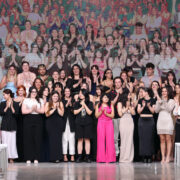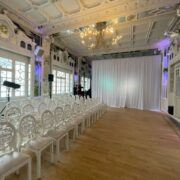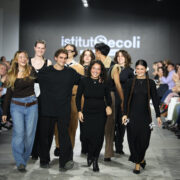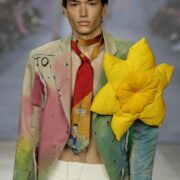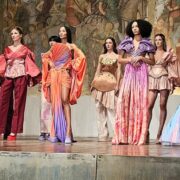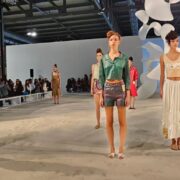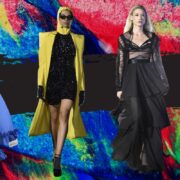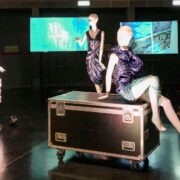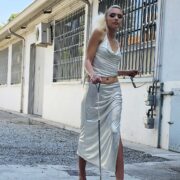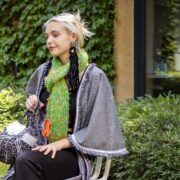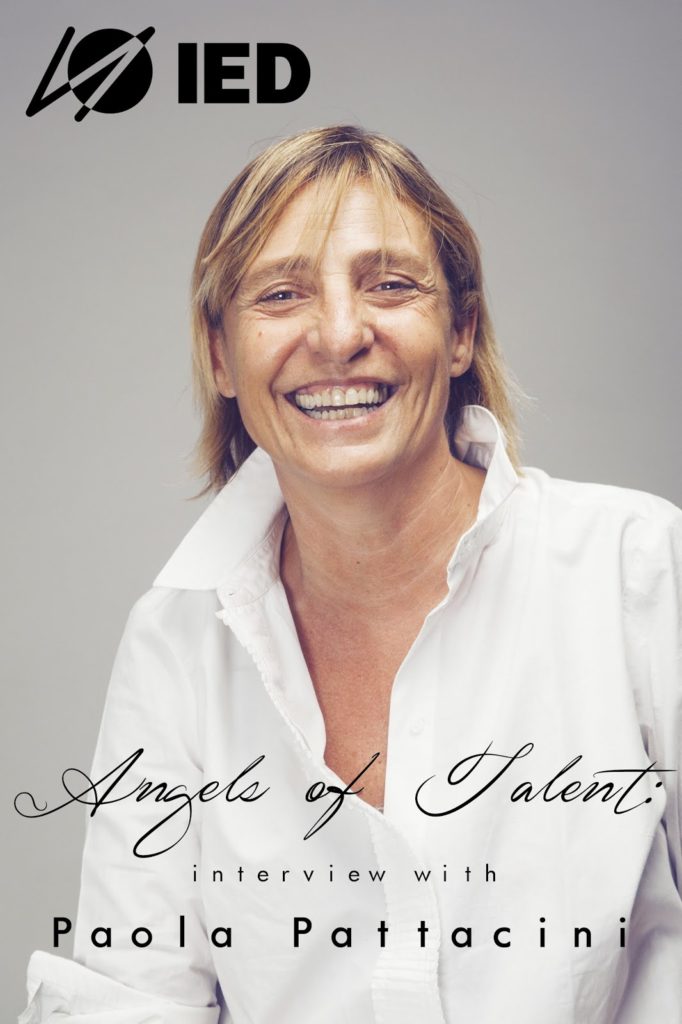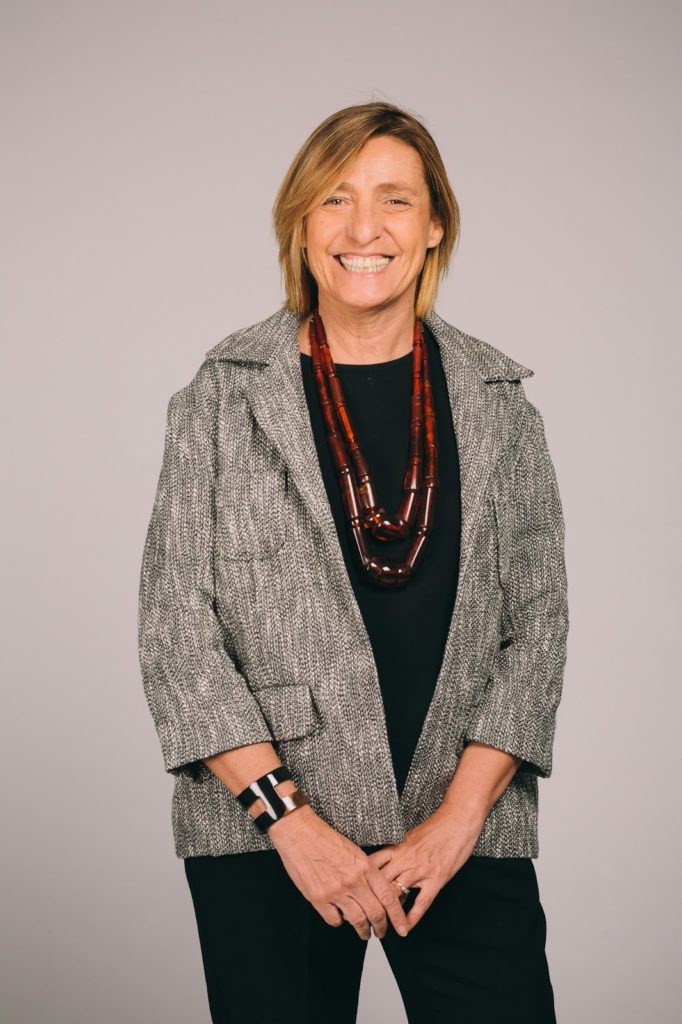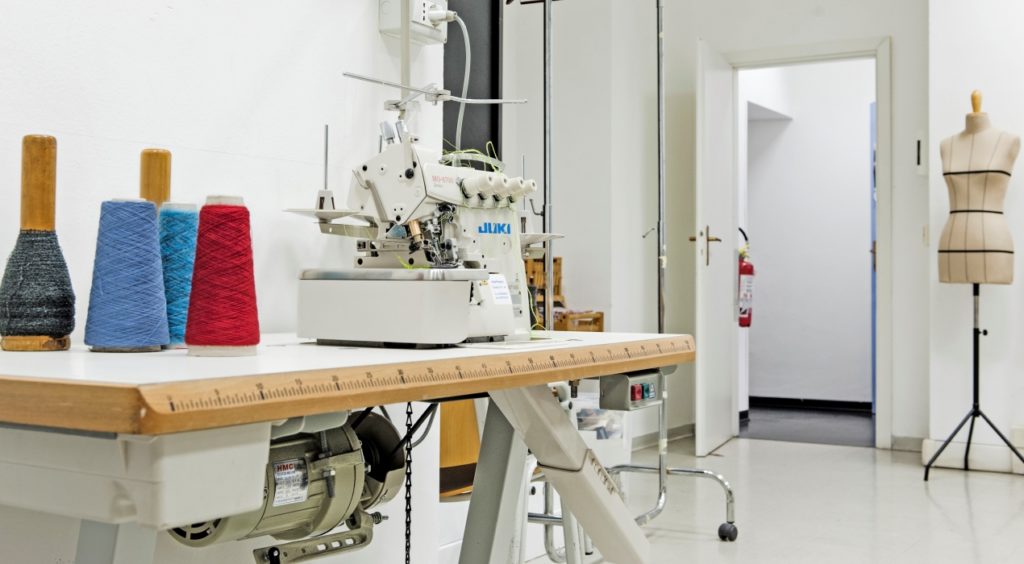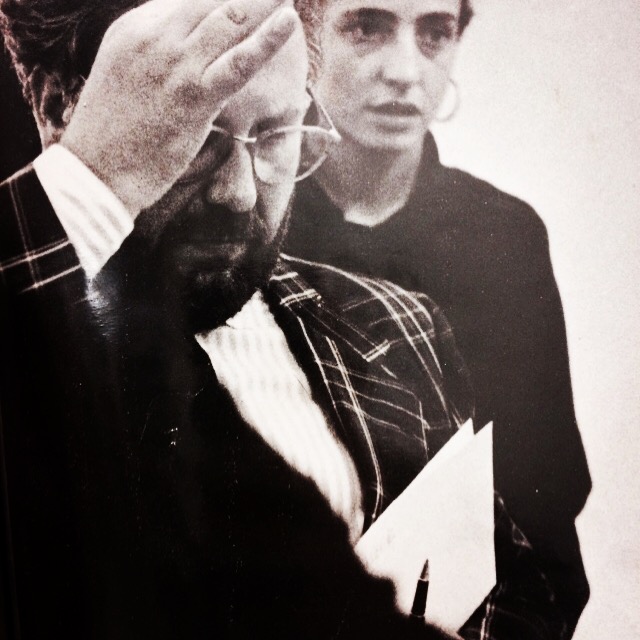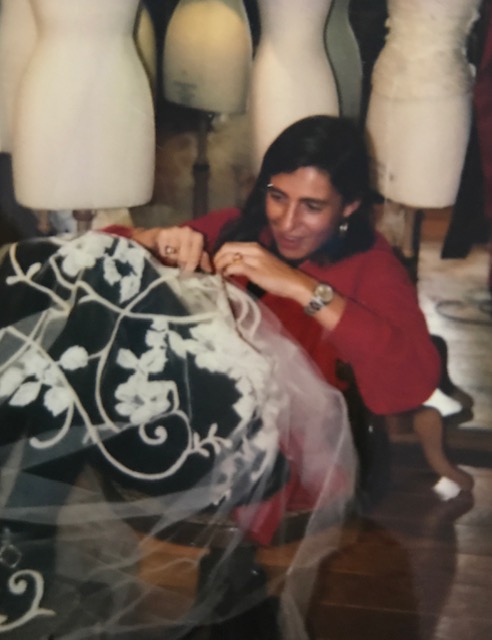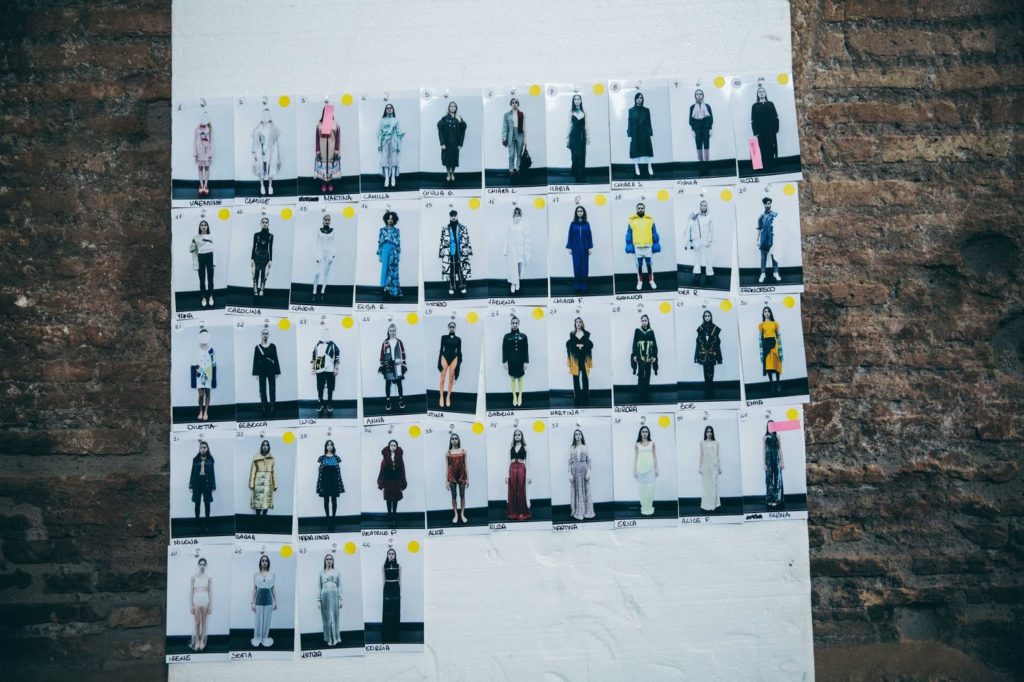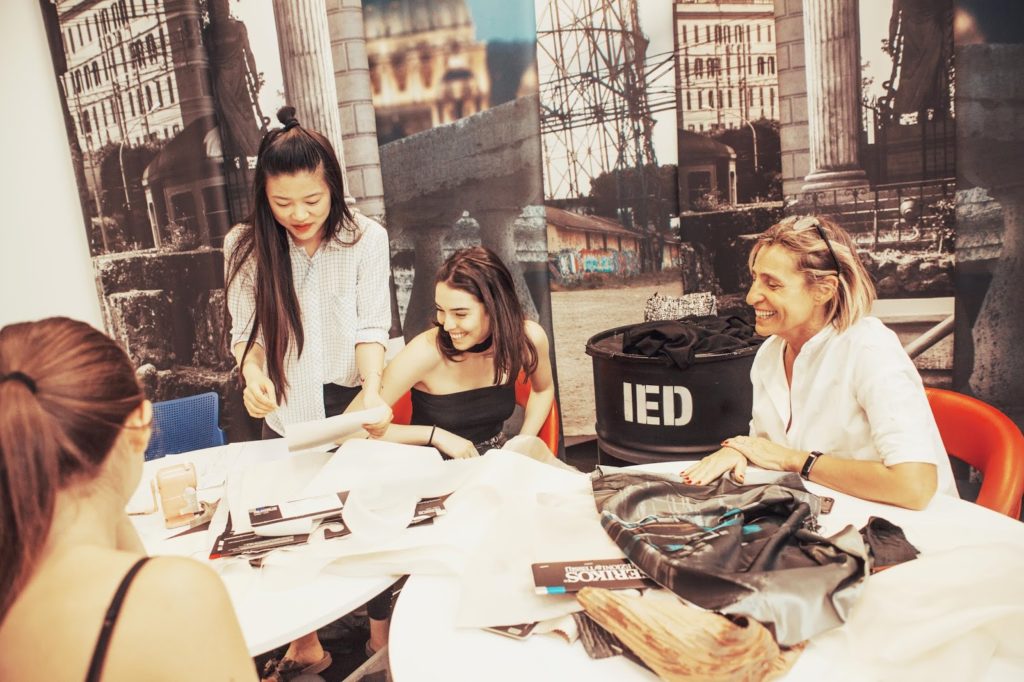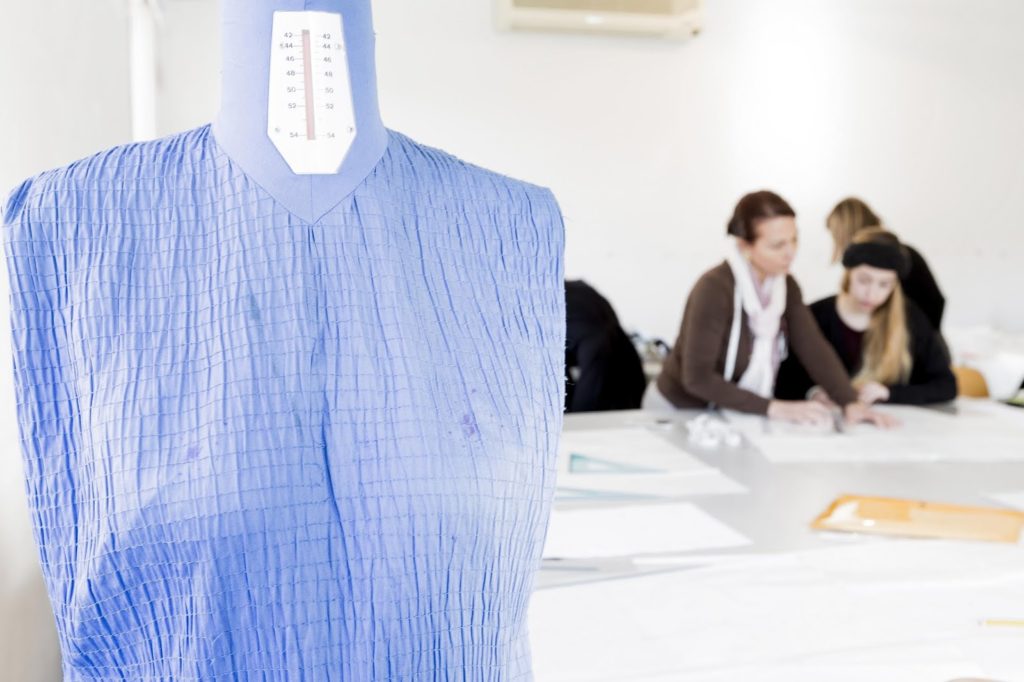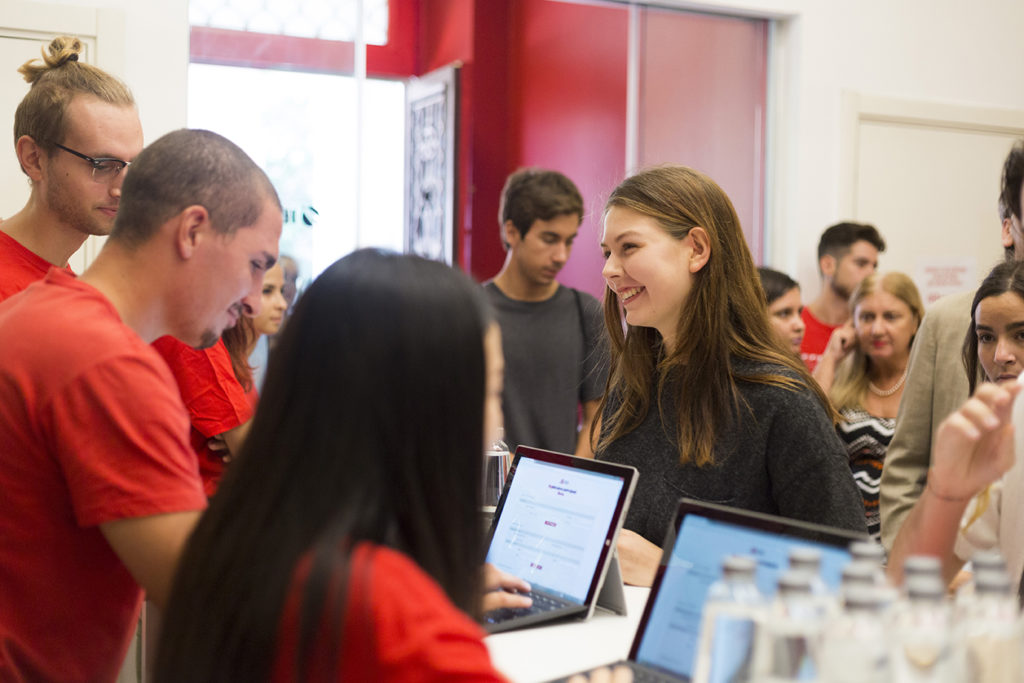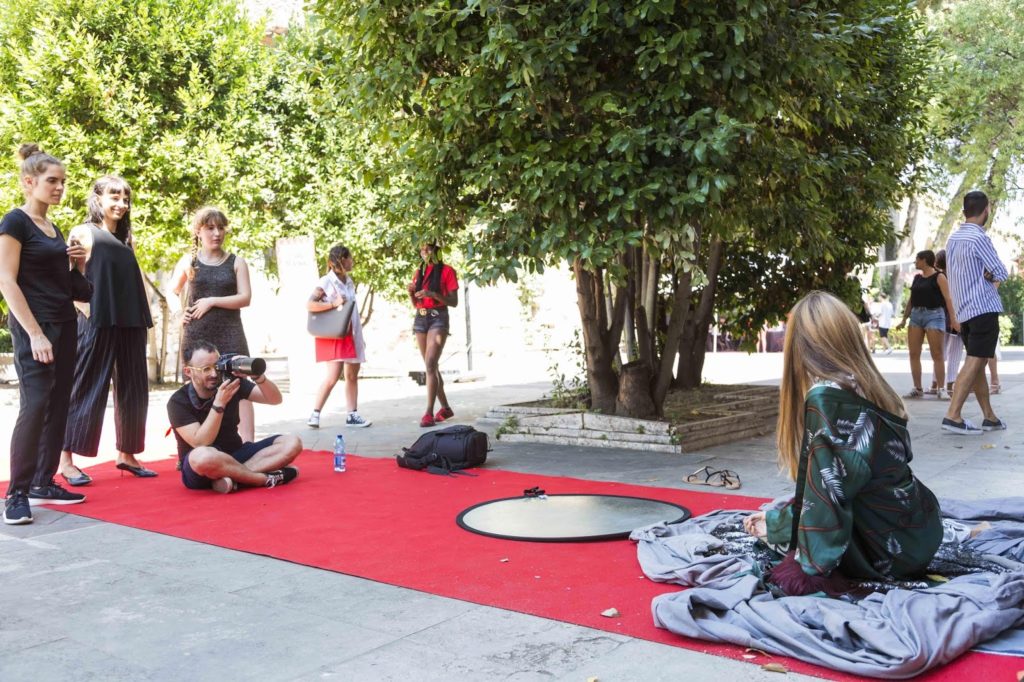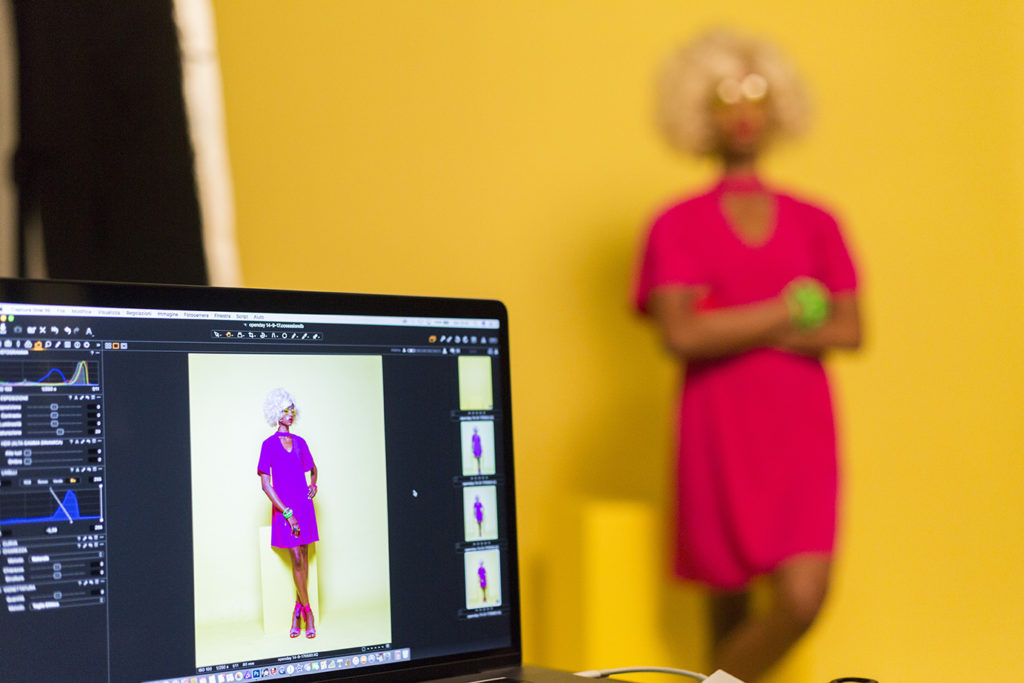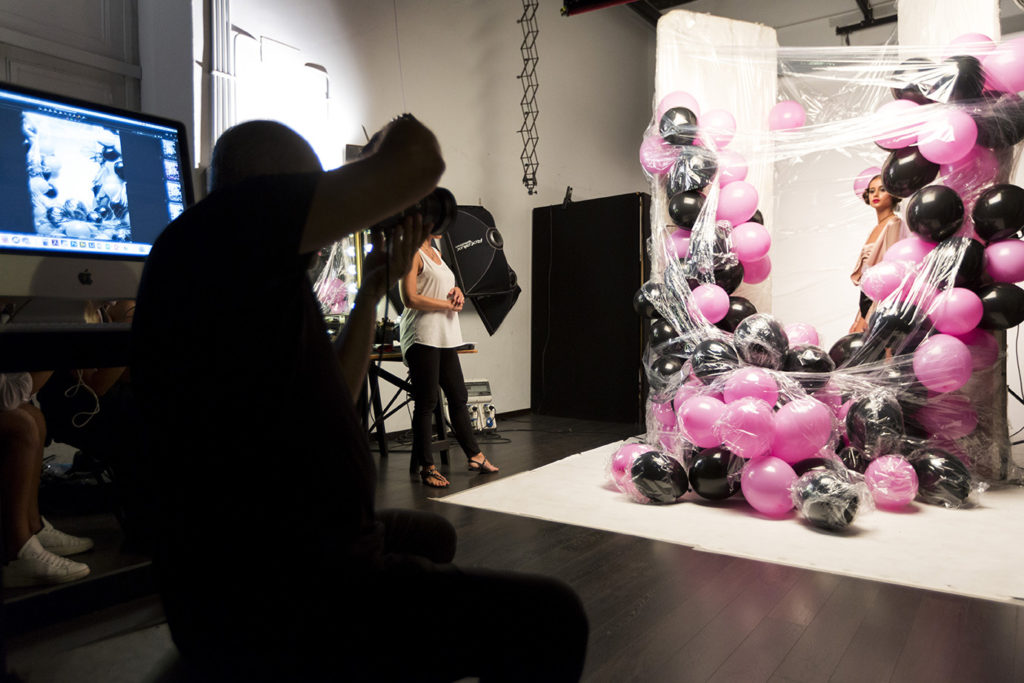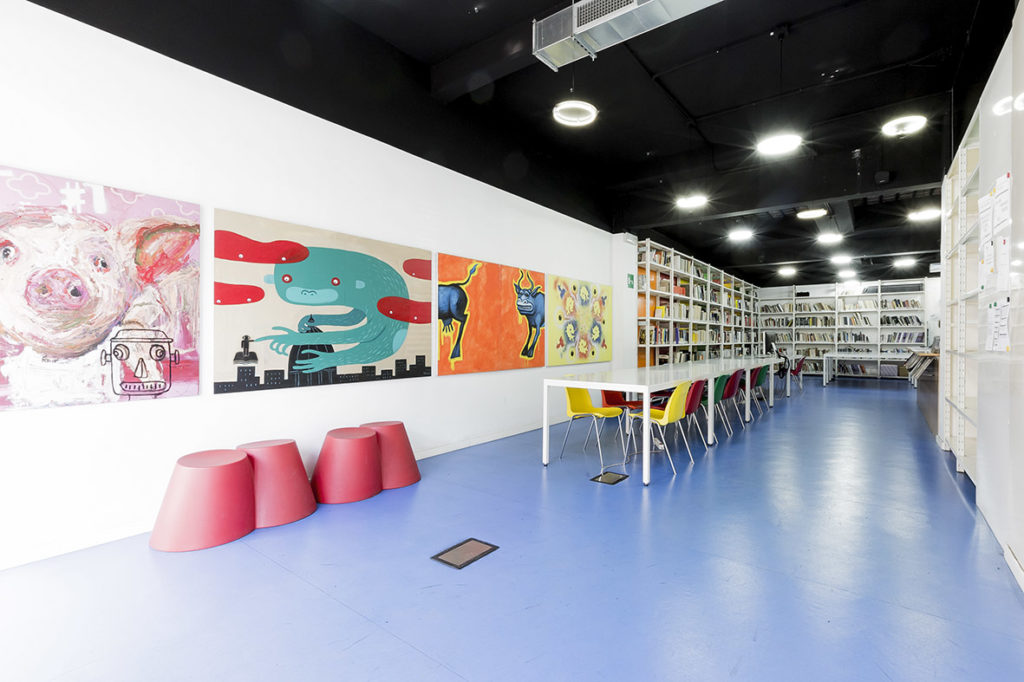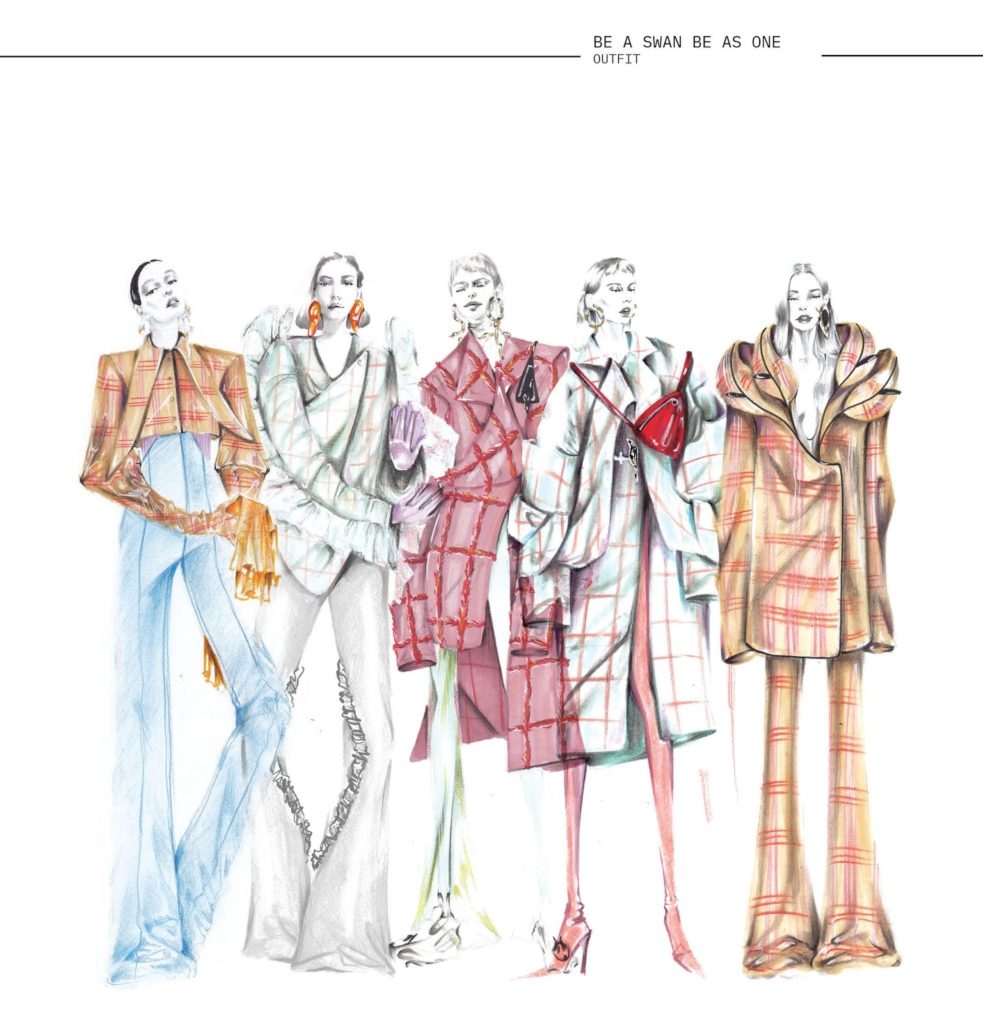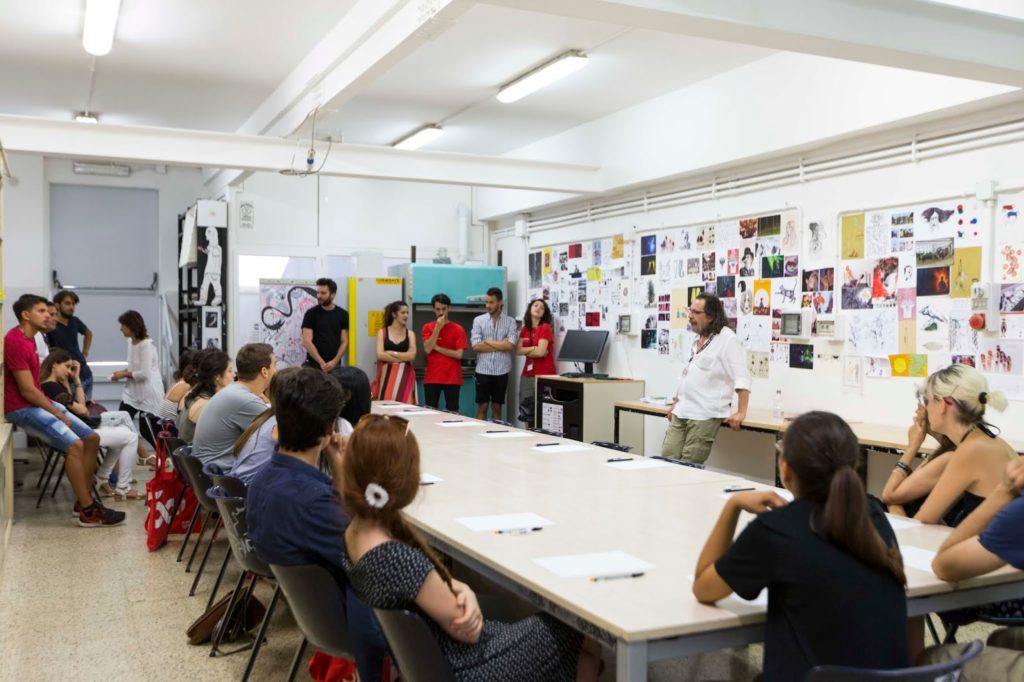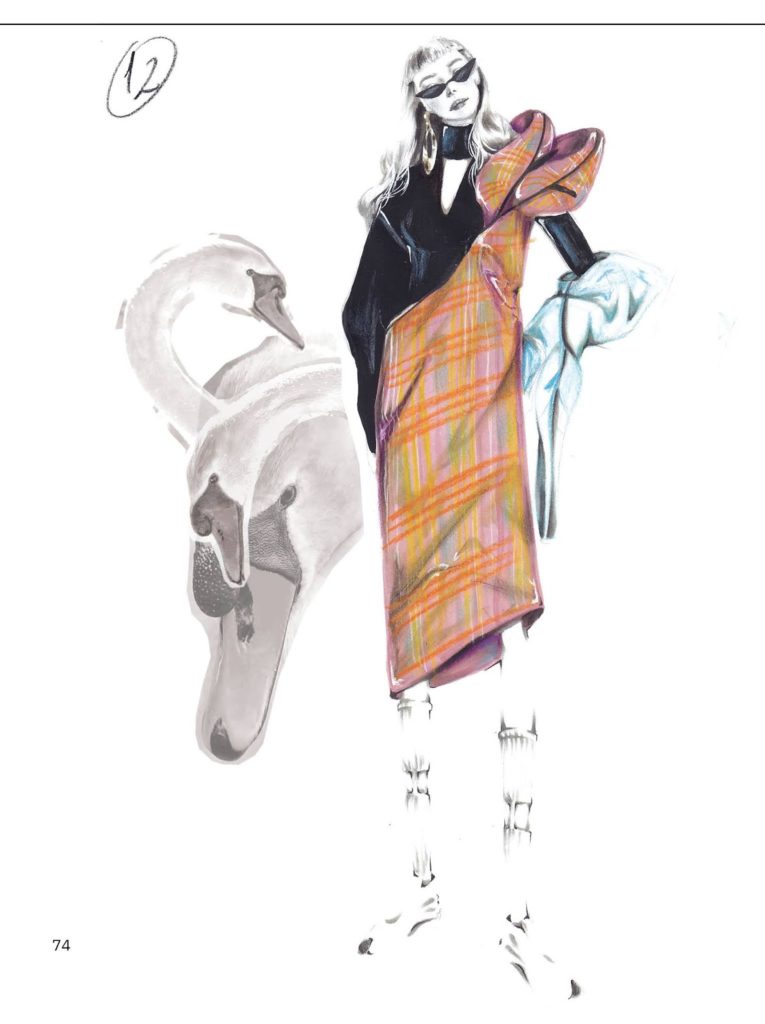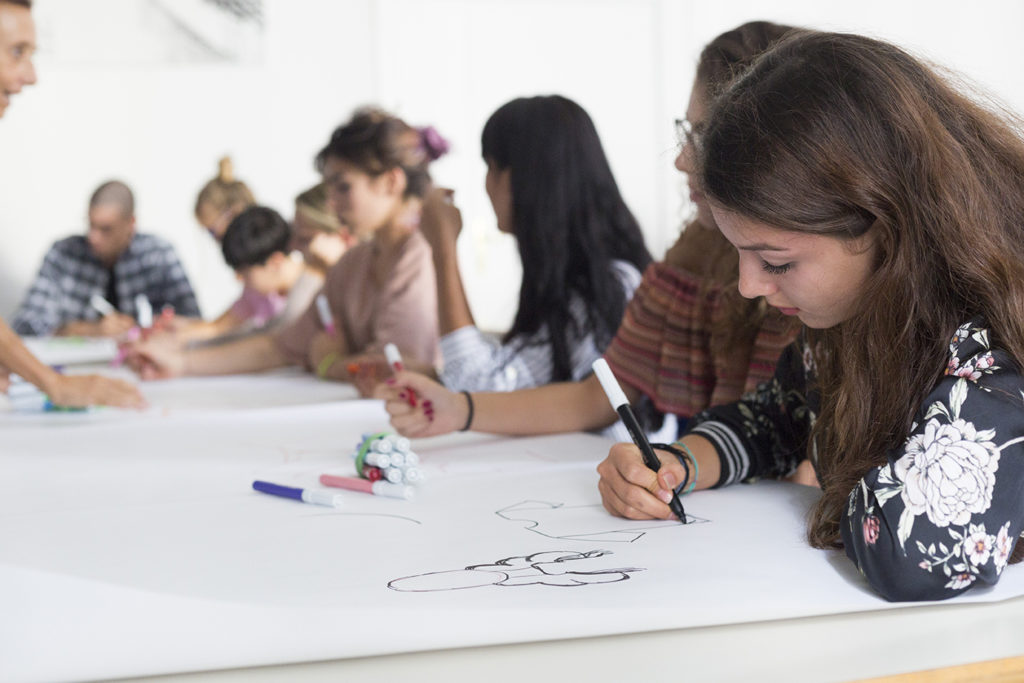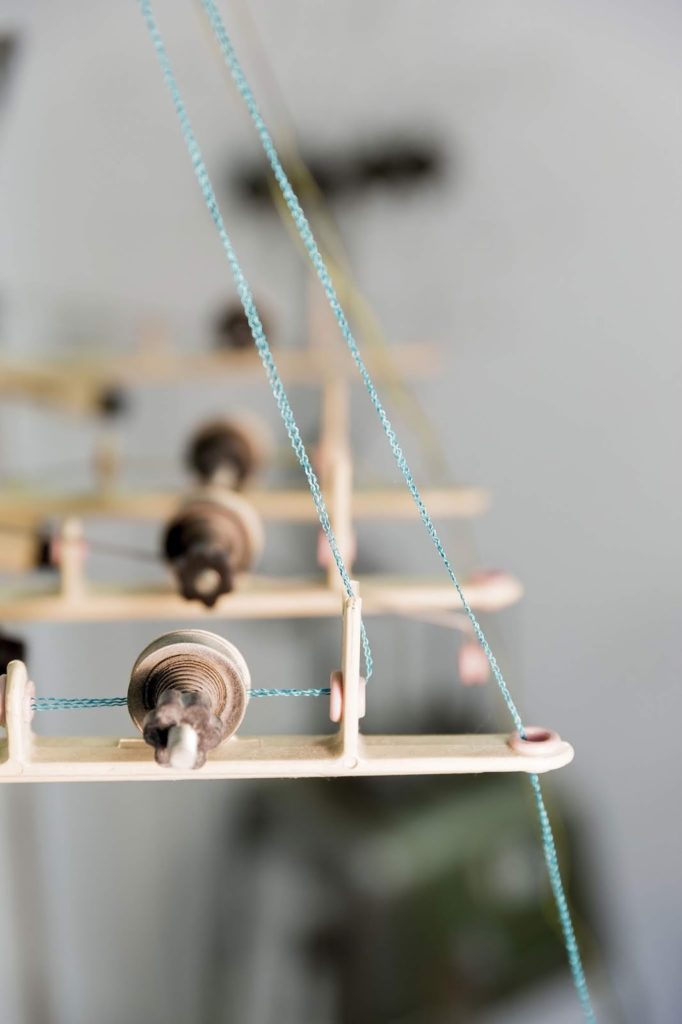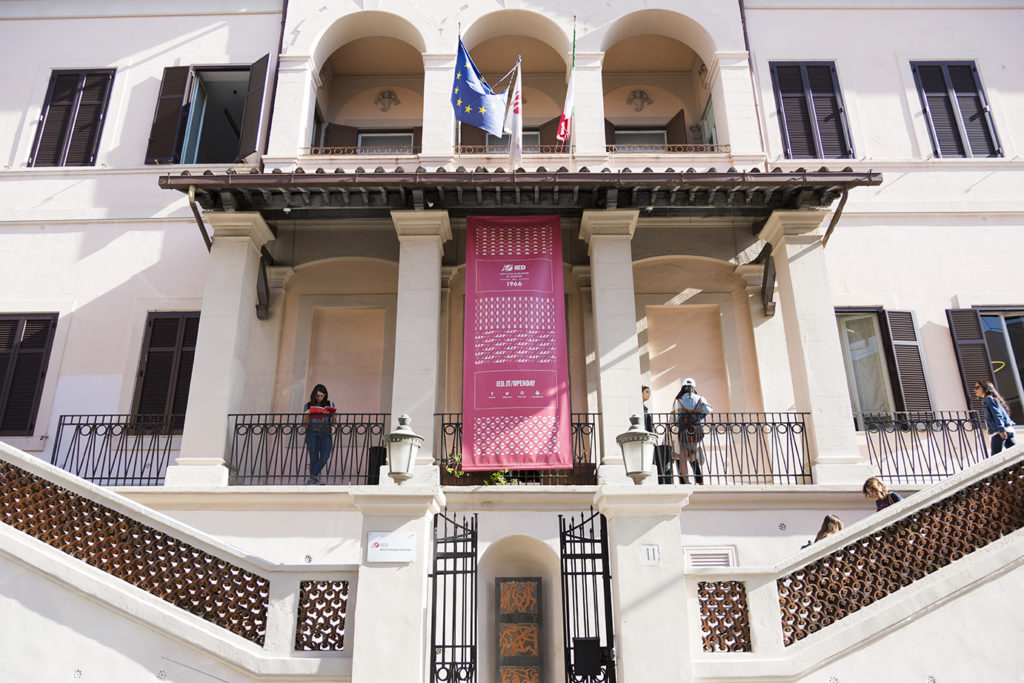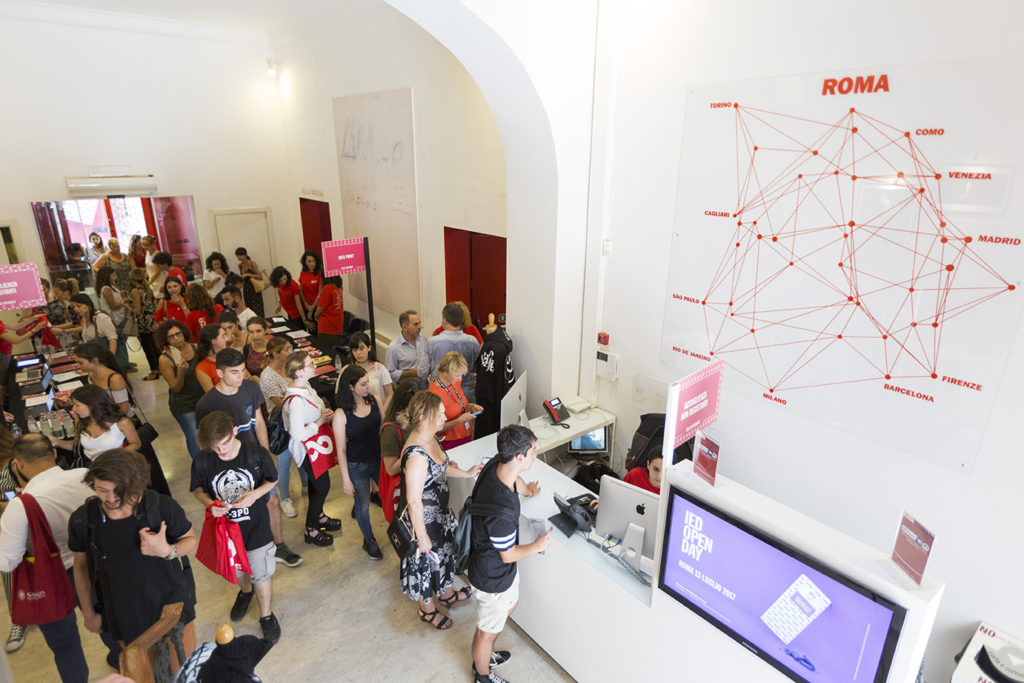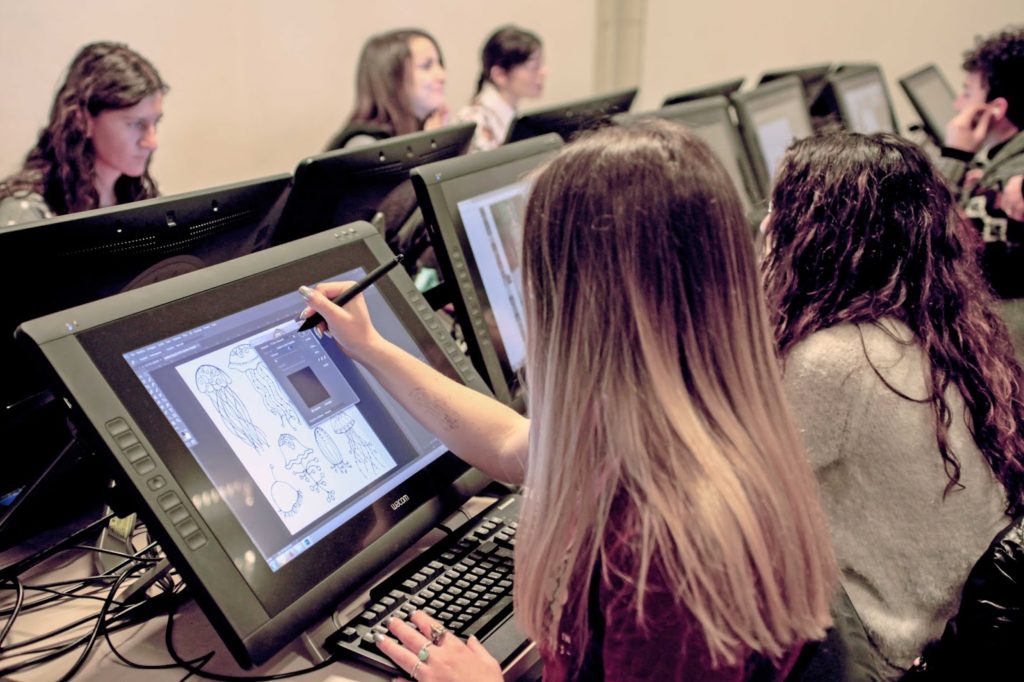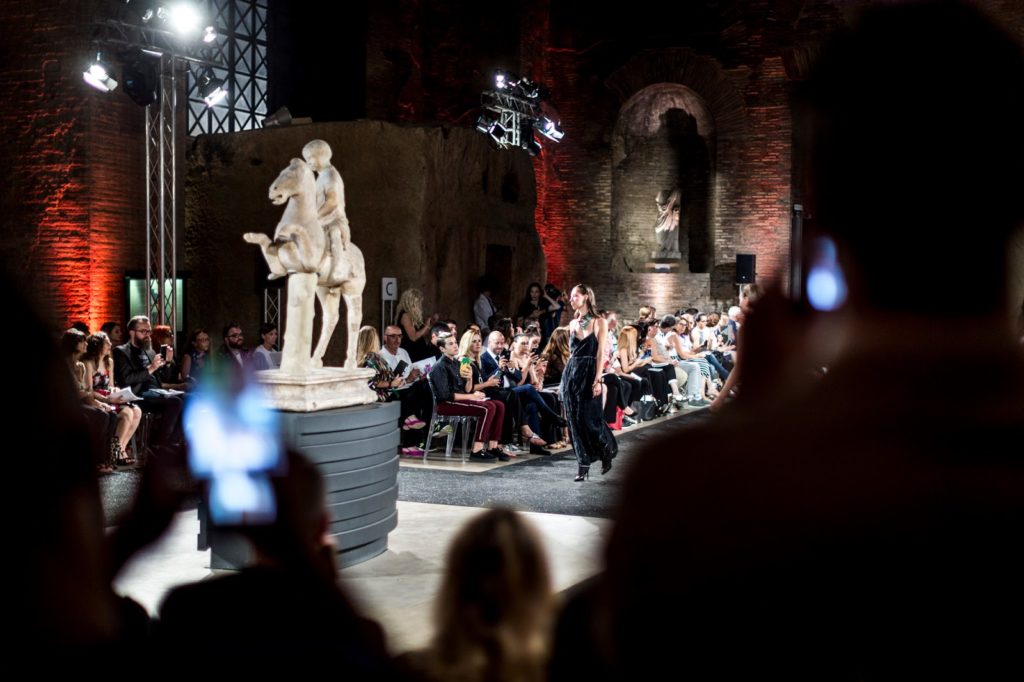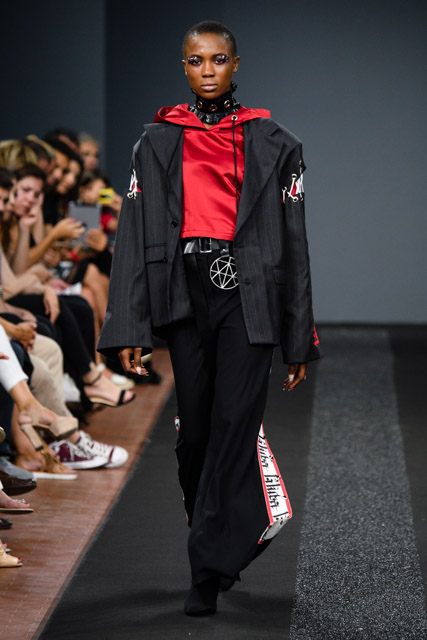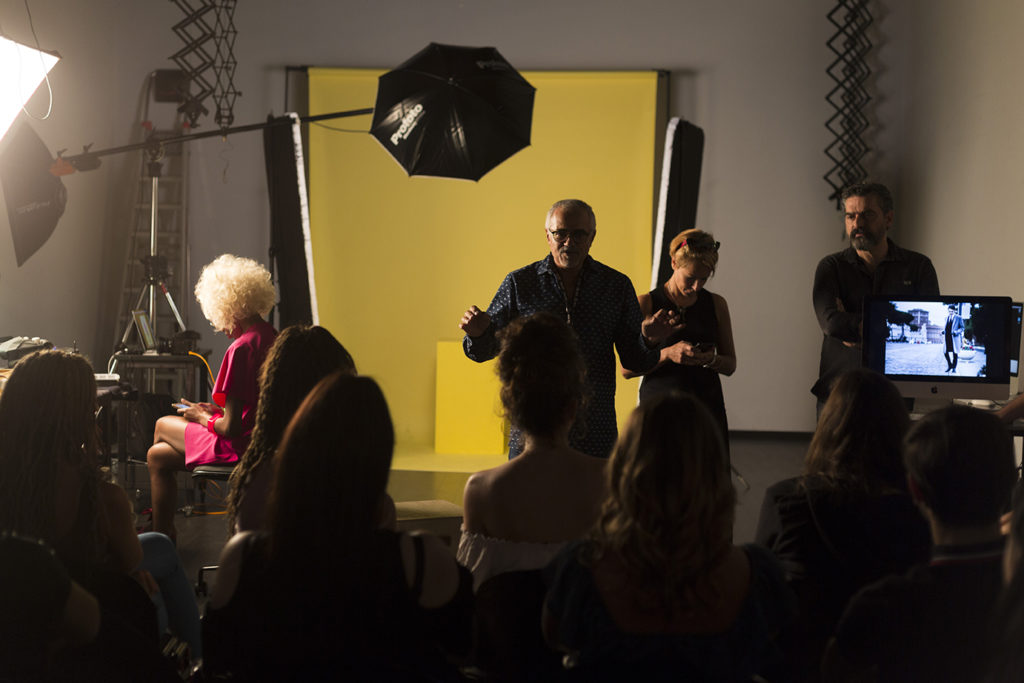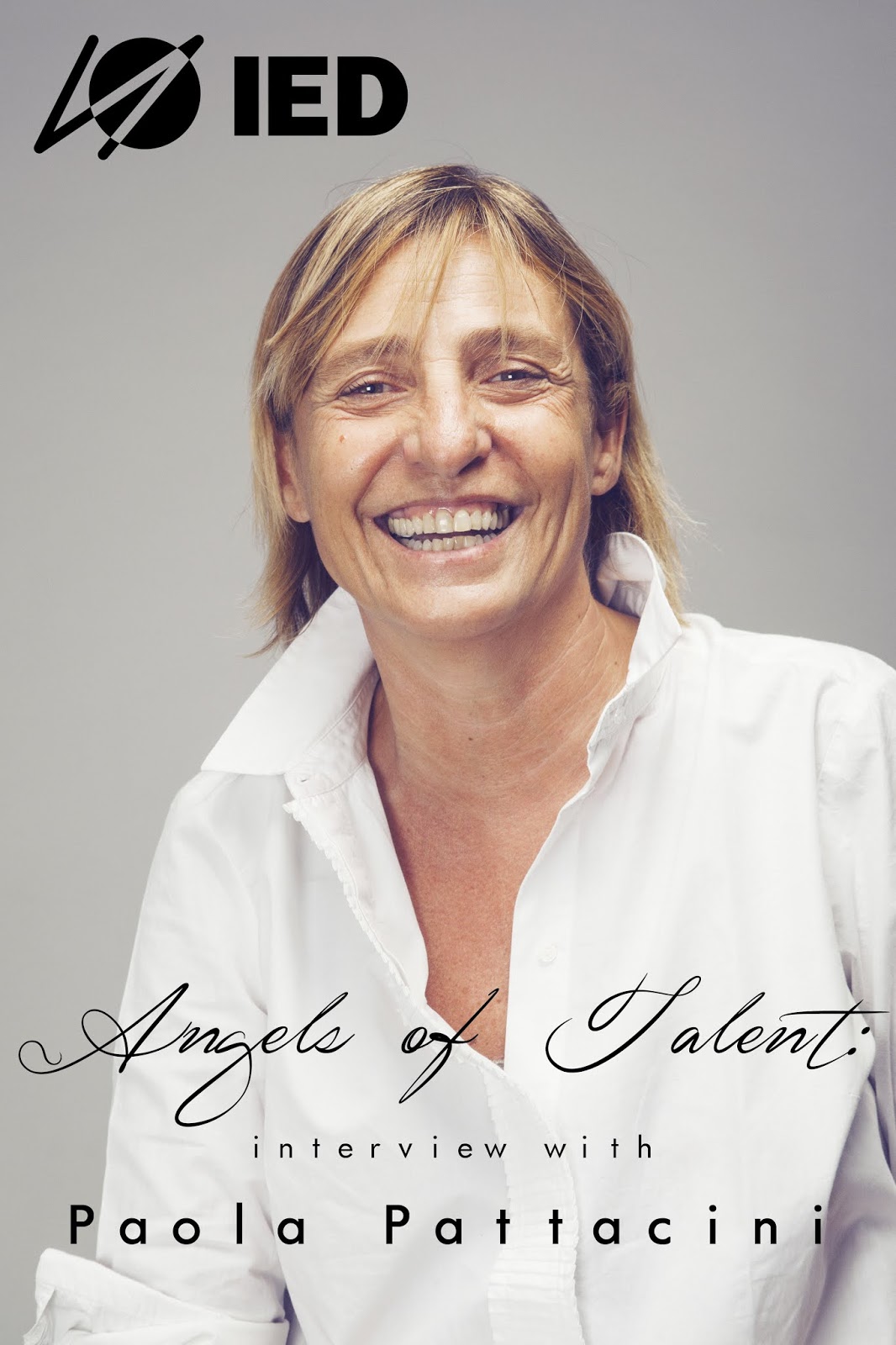
Paola Pattacini, after a life spent between fabrics and
fashion shows as collaborator of prestigious international fashion brands,
tells us about her work as Director of the School of Fashion at Istituto
Europeo di Design in Rome. A interview in which she explain how they are training
the next generation of young fashion designers, speaking about the strengths of
one of the most important fashion schools in the world.
stories to tell. A fashion professional who speaks about herself in a very
simple way, transforming her incredible experiences into anecdotes and examples
for better explaining what she wants to say, just showing an indomitable and
strong spirit going straight to the point.
A practical woman, I’d say. Who immediately knew what she
wanted, who did everything to realize her dreams, working with the greatest
designers and international fashion brands. Who changed her life a few years
ago for continuing a personal journey sharing what she learned in many years of
work experiences. A person of stunning professionalism, who has now become,
with passion and satisfaction, a great talent grower.
laboratories and classrooms, about which I will soon speak in an article
dedicated to the best Roman fashion schools. Paola Pattacini, who is its
Director since November 2016, could not be present, but with great pleasure I
had the opportunity to make this long interview with her, a conversation in
which she reveals something about herself and much more about IED’s world.
Working in the fashion world, with the greatest designers and then teaching.
It’s a kind of path that is all part of a dream, which is fundamental for doing
creative jobs.
I tried everything I could to become who I am now. I
started in 1982, and those were years in which everything was possible, there
was time to teach even in the companies. Therefore my training started at Max Mara,
luckily for me since the beginning with great personalities like Mrs Laura
Lusuardi, who was my first teacher and who’s still the fashion coordinator of
the whole group. There I was trained in the textile research.
They taught me how to work with designers and there I
became the responsible of a just-born company, Marina Rinaldi, and then of the
commercial clothing sector. I started very early when I was just 18,
immediately after the high school, because I studied something that didn’t
interest me. I wanted to do fashion. So at 23 I moved to Milan, because Mr
Ferrè heard about my experience at Max Mara and he called me and I stayed with
him until 2007, when he passed away. With him, I learned practically everything,
from the fabric design to sketching, working side by side around the large
table where all his amazing drawings were.
Gianfranco Ferrè was an extraordinary designer
us everything, starting from sharing his great culture and demanded it from us.
I’m not a graduate, but I know quite enough about fashion and culture thanks to
Ferrè, because for him the research must always start from books. I was every
day around the table with him, choosing fabrics, coordinating the collections.
The very nice thing that happened to me is that in the 9
years at Christian Dior in Paris, I was there as a reference person. I had this
amazing experience and, after Mr Ferrè passed away, I did a thousand other
things, but I’d like to mention only the biggest ones. I returned to Max Mara,
and then I went to Ermanno Scervino as head of the accessories office, because
Ermanno wanted a person coming from clothing design sector. I spent two and half years
with him.
To be honest, when a person grows up needs to do
something new. I’ve always met many wonderful people, but the time had come
for me to make other things and so I dedicated myself to education, which is
giving me so much satisfaction. First, I started teaching in IED when I was
still working for Scervino, then they asked me to do more, to run the school,
and I gladly accepted because I think it’s a new path for me.
satisfaction.
people keep me younger than work environments. I mean, they continually
stimulate me, because they ask, are demanding and so many of their needs are
real. They are constantly leading me to study and to improve. While when you work there’s
no time for certain things. Mine is a divine job. Getting-up in the morning and doing something you love is an incredible thing, it’s wonderful being able to
live your passions.
How do you bring into your school this long experience
with the greatest designers?
lived it. Sometimes my students are a bit surprised, because in fact there
are not so many people who have been in contact with such great characters. Great
just because they worked very hard, but everything they did was very simple, genuine.
Sometimes I don’t really know how to explain it. It’s not dressing in a strange
way that makes the fashion designer, I always tell my students. Well, if it’s
part of their way of being, that’s all I need, but an extravagant outfit doesn’t
make the talent.
Armani, Valentino brought their creativity on catwalks, but in real life they
were absolute sober.
with the same seriousness and simplicity. And also with the same method. I’m from the same mold. I’m very demanding. Honestly, it gives me satisfaction, because I see that the students feel
that the dialogue with the teacher is with someone who really did so many
things. After all, it’s a great satisfaction both for me and for them.
What exactly is your role within IED?
when I was working. As Ferrè used to do: he sat next to every intern just arrived to
his style office to teach him something. In the same way, I try to be the
Director, but I’m not alone, I’m with a team of people. I coordinate the work
and organize the school exactly like a style office.
already get used to the working world
Having worked, I choose professors who are great
professionals. I know their resumes very well, I know almost all fashion
companies, having friends everywhere. I know that my professors are exactly what
they say they are. I bring into the world of education the fact of not being an
academic, but a person who has worked, bringing the real working world into the
school. I’m continuously in contact with friends, alumni, former colleagues
around the world, it’s my business to know everything that is going on.
practical role, now you’re developing an educational path. Over the years you
knew many just-graduated fashion designers. How they changed over time? Is there
an evolution of the student?
student. In the sense that previously, all the schools in general were oriented
in one direction and even the students wanted to be only fashion designers.
Today, instead, they are much more careful and know that there are many
professions to choose from.
The first thing I always say, in all the meetings
we have before their registration like the “Open Days” or “Creative
Days”, is that in a style office usually designers could be 2 or 3, but there
are those who design fabrics, accessories, who makes embroideries or
forecasting. A thousand figures. So we offer courses for all of these careers and
when a person comes to us, we must be good at understanding their main talent and
developing it. Thanks to our way of doing things, I could say that they don’t
have problems in their working life.
of a very strong orientation
have several drawing disciplines, so in one way or another they could learn. But
if that’s not their talent, maybe it could be organization, designing fabrics,
being a stylist or a product manager. They can discover that there are many
creative jobs. We also encourage students to be very proactive.
For example,
we had a girl who graduated last year, who now is the link between the Givenchy’s
office in Paris and the manufacturer in Stra, precisely because we taught her how
to do this job. That is not pure and simple design, but that’s an essential role
present in all the style offices, because all fashion designers need someone to
whom explaining what’s in their mind to realize it. We teach this.
We don’t teach only how to design menswear, womenswear or
accessories, but we create groups in which everyone has his own function and
works according to his role. I can’t say that everyone surely finds a job,
because a lot depends on how they present themselves and on their enterprising
spirit. But I’m happy and satisfied when they are not frustrated because they have
found different roles to express themselves without necessarily drawing.
 |
| A student of IED School of Fashion, coordinating the collection during the graduate fashion show (photo by Francesco Ormando) |
fashion world, but is confused about the most suitable type of fashion course?
matters most is that they are satisfied by the paths they choose. That’s why we
organize so many opportunities to meet, absolutely free. I say that because it’s
something we are very proud of. The IED’s approach is very focused on
orientation. We are a network that organize these meetings throughout the year.
The “Creative Day” are at least a couple times a year, with a day
dedicated to meetings opened to high school students of the last or
next-to-last years.
They come to IED, having a first meeting with me, in
which I explain them not only what our reality is, but especially what is
fashion world, as I have experienced it myself. After that, the students are
divided into groups and we organize specific meetings for who wants to make
jewelry, fashion design or fashion styling. They are involved in real
workshops for all the disciplines we teach.
satisfaction, because everyone realizes that choosing could be easier than it
seems. I always recommend to who is already decided, to try the path they desire,
but for those who are undecided it’s better to try what at first sight might seem less
appealing. I mean, if you want to be a fashion designer but you are also
interested in the role of stylist, go and do the styling workshop. In addition,
the aspiring students could follow one workshop in the morning and another in
the afternoon. Or come in April choosing a workshop and then in May another.
and courses. Are the workshops free for them?
your “Creative Day” on the IED’s website. There are also the “Open
Days”, in which we open the school to who wants to visit it. But in the
afternoon, so as not to waste a day of lessons, we also do workshops. Precisely
because we are a very practice-oriented school. We are not very theoretical.
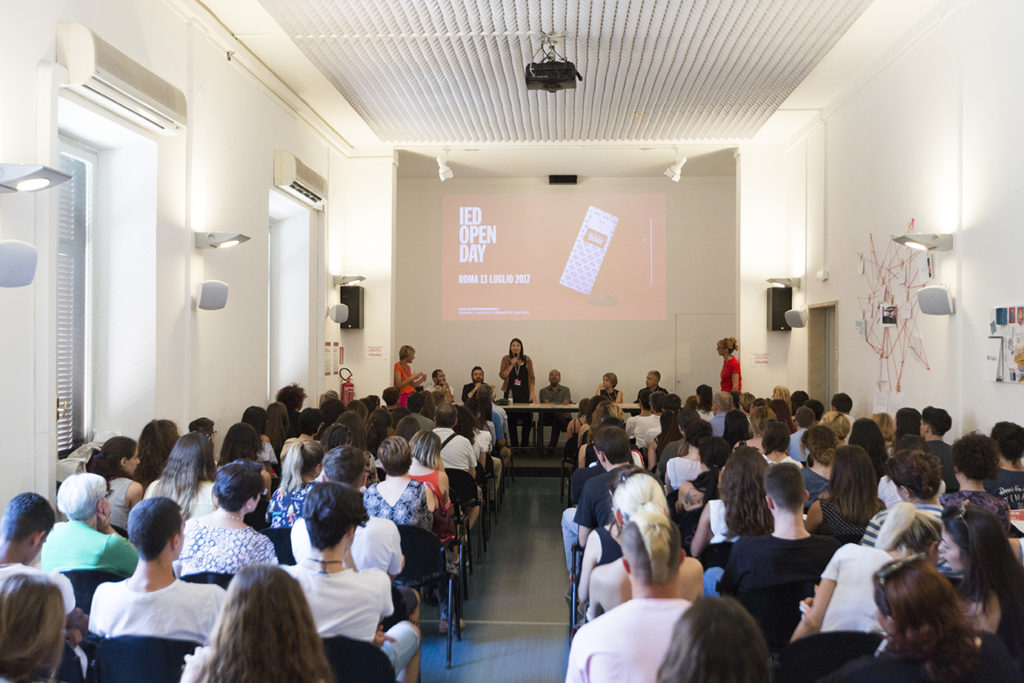 |
| Presentation of the “Open Day” at IED School of Fashion of Rome |
laboratories
we will expand them because we have 3 patternmaking laboratories, but with so many students now, we’ll start another tailoring lab very soon.
dream job, but insiders know how much work and effort it requires. Students
during their educational path may also have moments of crisis, feeling a bit
overwhelmed, sometimes giving up. How the school help them in these moments?
is not enormous, even if we have many students. Then I try to continue my teaching
activity, so I don’t lose the contact with my students. I have a course in every
year and I’m even the supervisor of many thesis. I really enjoy teaching and it
keep our relationship constant. We follow our students closely, listening their advices,
trying to understand how their path proceeds. We also have anonymous tests in
which they can report all their perplexities or difficulties and we do the
follow-up on all of them, because it’s an important feedback.
Then, obviously, there’s always something wrong for
someone, even if statistically I’ve noticed that this is only for who doesn’t
really want to work hard, who believes that everything is easy and has a vision of fashion as a
dream world. Who believes that Mrs Ferragni is only there for laughing and
changing outfits under the spotlights, while in reality her job is very hard. There’s a hard work behind the dream. I remember we spent the nights
working. One could think … how wonderful is Ferrè or Dior. But it means also working
for 5 nights in a row to prepare the fashion show.
had to invent them. Hard but beautiful.
There’s a strong return to analogue and manual drawing. All the big fashion companies
ask for it.
change coming from many young designers, who maybe compared to our generation,
are a bit more enterprising in engaging with their own small brands. Probably
also thanks to internet and new technologies, which actually are very helpful. The
role of the designer has evolved over time. What skills the companies require now
from the students?
where to find it. The problem is that companies don’t know exactly what to ask from
us, but I see what they are fascinated by. First of all, what makes the
difference is culture, because unfortunately over the years I have seen a big
change. I know I’m part of another generation, but in those times we worked on
books, making our own research. Today, with Pinterest and all these search providers,
for me it’s a disaster, because when the students present to me their research,
I find the same image in 10 different mood boards.
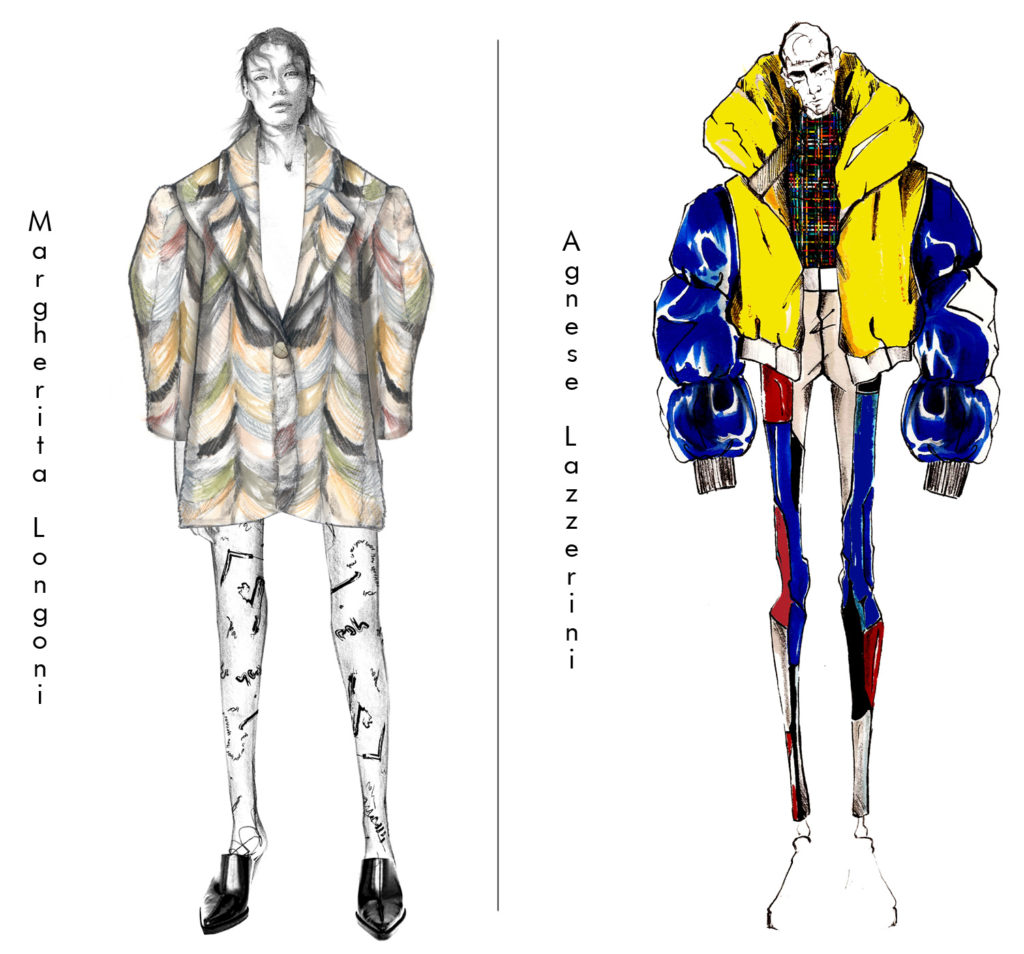 |
| Fashion sketches by Margherita Longoni (at left) and Agnese Lazzerini (at right), two students of IED School of Fashion of Rome |
on words only, but that’s not what a designer should do. Is it right?
have so many subjects in which we have great academics, journalists, professors
who have written books, exhibition curators who help students in the history of
art. Who help them with a useful approach to research. We have lots of students
coming from the grammar school, and I love them, because for me culture is the
basis and I know that a trained mind will help them a lot.
Now, for example, as network, we are focusing even more
on our libraries, so that students could have places where to study, with books
and magazines. We have already good libraries, but this is our next goal.
Making huge network libraries, with also an interchange between the different
headquarters. Because the contact with books is fundamental, to make individual
researches that goes beyond what you can see on internet.
draw by hand. My students know that with me design and manual drawing are
important. If I see a sketch made with Illustrator, I throw it away. I’ve seen
Mr. Ferrè sketching everything in front of us, including flat drawings, at the
speed of light. Now making a technical sketch with a computer is too trivial
and even ugly.
ideas. All digital portfolios lacking in freshness.
fascinated by beautiful sketches. I’ve always had this working method and I
insist a lot on this. I want that students create, beyond the project, a mental
path expressed through fabrics, sketches or if they can’t draw, find a way to
communicate, making tangible sketchbooks that talk about them.
When they present
their portfolios in the interviews, companies are struck by sketchbooks instead of only seeing
digital sketches and flat drawings. Also in fashion competitions. They want to
see works with something extra, having a path behind them, a personal research.
All this is fundamental. Now companies are asking for this.
International Talent Support, with Barbara Franchin who selects portfolios that
seems beautiful dream boxes. Because the skillful designers express themselves through
highly personal manual work. Besides the competitions, are the companies
returning to this?
work to please them all. In the design disciplines, there are professors like
me who want everything hand-drawn, because I teach Haute Couture and
ready-to-wear, the world I lived. We have a professor who teaches in his own
way high-tailoring men’s design, then another very good teacher who is
responsible for Diesel’s denim studio and who teaches with that method. The
students experiment and develop any kind of design process. Then in the third
year, they decide with whom to work for their thesis projects.
after having a wider range of experience
everywhere. Even the projects made by the 2nd year students are part
of their portfolios, ready to be presented during competitions and job interviews.
companies. Do you receive any suggestions from them to update the educational
method? Do they ask for something more specific for satisfying their production
or market needs?
how to bring the right people to the right companies, adapting to their needs. For
example, a Dior manager came to us, saw 4 or 5 of the most suitable students in
a 5-hour interview, making them draw in front of her to see how they work and project.
Now there are many competitors in the job market, so you should
be able to know how to sell yourself, in the sense of knowing how to propose yourself
in the right way. That’s why I’ve also included Public Speaking among our
subjects, because students can make wonderful projects, but they also need to know how to explain them.
of the fashion product
in its own way, but the thing that everyone asks me is manual drawing in
sketchbooks, a need of a return of pure creativity. Because after an initial general flattening, there was
a time when everyone made only strange unwearable things. We moved from one extreme
to another, forgetting the middle way, which is a creativity made of ideas and
good taste.
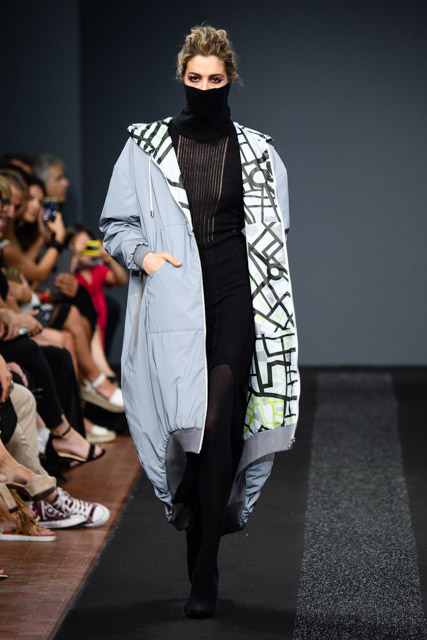 |
| IED School of Fashion’s graduate collection (photo by Luca Latrofa) |
important too. I remember also a period in which everything was only
theoretical, but manual work is fundamental. Some schools go in this direction,
others don’t.
who also won the British Council, but without my help, the patternmakers
couldn’t have made their job, because he made unintelligible drawings. I call
it the Montessori’s method of fashion, that is no method, but only a lot of
creativity. Today a designer must also know how to do things.
fashion means real products, something you can wear. A person may be
extravagant and eccentric, but the human body has shapes and proportions that
are essential to build wearable clothes. So companies now ask students with a
great know-how. Something else?
is focusing on sustainability and we are working hardly in this direction. We
are doing a beautiful project with all the IED’s Italian students, “The Time
is Now”. Me, Sara Azzone of IED Moda Milano and Sara Maino, are on the
jury. We’ve selected some students who are working with Casamadre, a group of alumni
with their own established brand, following it for six months just like real
professionals. They are making incredible projects.
opinion, sustainability should already have been the present. Well, we could say
that surely this is the future of fashion.
“The Time is Now” will be released soon and we will do it for many years,
with moments for selecting some students to carry on this idea. There are also many
special projects. The students are working on sustainable issues and are very
attentive to the problem.
have a future, while we can handle, well or badly.
gave a fair contribution to the current problems of pollution.
designers of the past, who were geniuses. But at the time, saying to Mr. Ferrè
or Mr. Valentino that a red couldn’t be so intense because of sustainability, would
be impossible. We’d see apocalyptic scenes. They’d have thrown us off the window
from the third floor. For everything there’s a season.
when I was at the fashion show of IED Milano, there was a project connecting students
of fashion design, jewelry design, styling, communication and graphic design. My
idea is that, being a network, there is a synergy between the various school’s sectors.
Is that so?
connections between various worlds. In Rome we are 4 directors, for fashion,
visual arts, communication and design, plus the Chief Manager and a staff that
is really amazing, because we are very close to each other. We are continuously
connected and then we have a meeting all together every 15 days to take stock
of the situation, to understand how to share projects and make the students
work together.
thesis with the Capitoline Museums. There were jewelry design students who
worked with those of product design and those who re-designed the museum’s
spaces. Wonderful thesis. For a bike-sharing project for the Municipality of
Rome, the fashion design students created smart clothing for cycling, someone
invented a type of bicycle, others a safe seats for babies, with students involved
in the product communication, visual artist who made videos, graphic designers
who did the coordinated image. Well, they work a lot together.
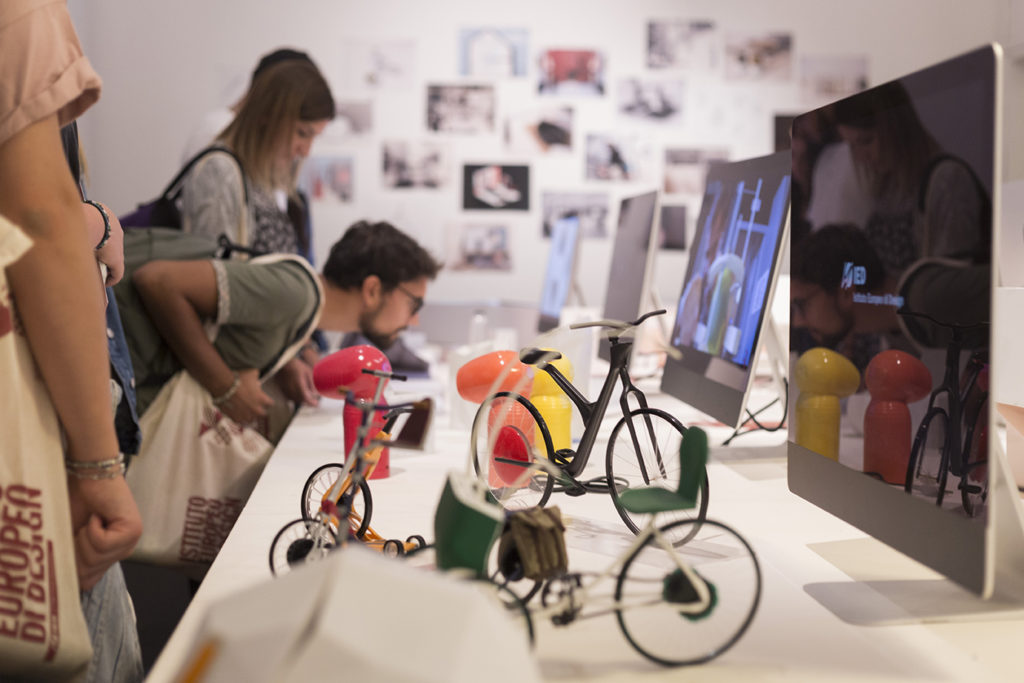 |
| Sustainable multi-disciplinary projects at IED Istituto Europeo di Design Rome |
headquarters?
meeting a month with all the directors of fashion schools and the same do all
the directors of the various departments. We bring the news from different
cities and deciding how to proceed, analyzing our needs, comparing our
programs, exchanging students. At IED, we work a lot on interchange, because
confrontation is important. I have to say that since I came here, I never heard
about a Roman or Milanese school. We are a network that goes from Cagliari to
Turin across Italy.
imagine that obviously, there’s a bit of competitiveness, but I was wondering in
which terms, or if there is a collaborative spirit.
we are. There is Accademia di Costume e Moda, Koefia and now Naba has opened. I
think we are all very different schools. I believe that every school has its
own specificity and the students understand it immediately.
with its own method, respecting its unique features. I don’t see a real
competitiveness. We are all very different, in my opinion.
stimulus to improve
and I think we should make things that others do not do. All these schools have
different courses and we want to distinguish ourselves as a school that provides our students with adequate tools for the work environment.
we also organize lessons and talks with great managers, with designers who have
incredible careers. When the students listen to their stories, they remain fascinated.
In my opinion, every school should keep its DNA in mind. Having important fashion
academies in Rome for me is an incredible stimulus and I’m really happy that
Naba has arrived in this city, because it’s certainly one more competitor, but
at the same time it means that Rome is a city where you can study fashion.
present here, that Naba also believes in Rome, without forgetting Koefia, Accademia
di Costume e Moda and other realities. I’m on good terms with everyone.
Rome, what would be?
Training young people who know how to do things, who are problem solvers and
who don’t create problems. Interdisciplinarity is our maximum strength. Then,
speaking about Rome, I’m focusing a lot on trying to go back to the past glories,
to a great sartorial work, particularity and uniqueness. For example, for our tailoring
courses I brought from Milan the same pattern makers who worked for Ferrè and professors
of a very high level. Because I think we need to go back there, to what our DNA
was, to the great tailoring tradition.
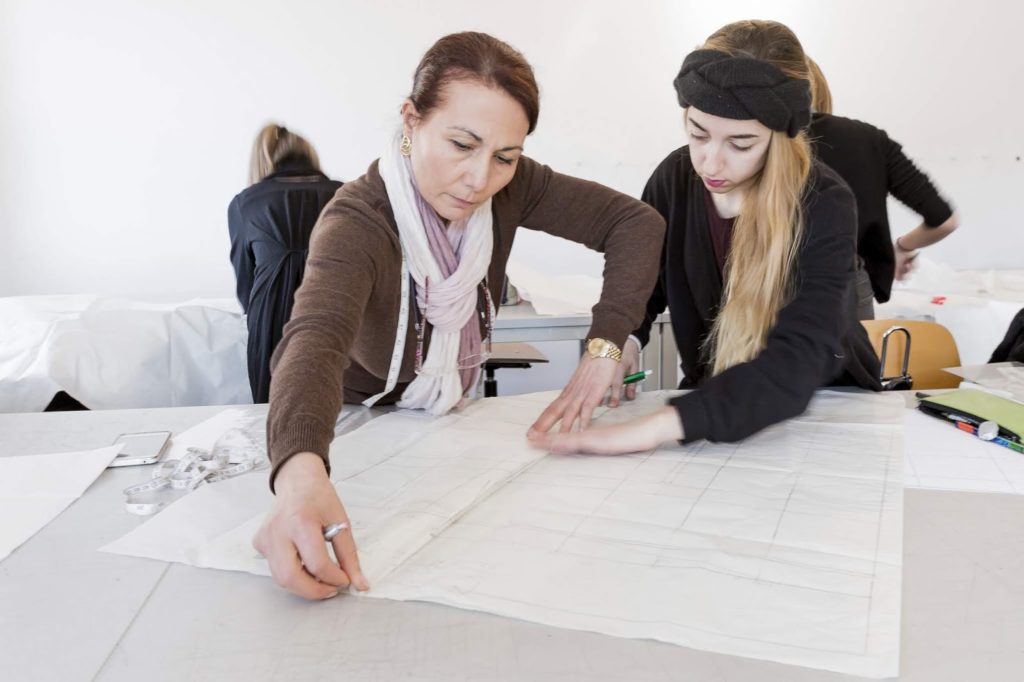 |
| Patternmaking and tailoring teacher following a student at IED Rome |
To the uniqueness of what was once Made in Italy?
this word anymore, but that’s the direction where we need to go. Not just
making expensive items, but doing well-done things.
which believes in young people and is betting on fashion schools and emerging brands?
really believe in it! We always do something within their events and I believe
that AltaRoma gives a boost to the city. It’s a beautiful reality, especially
in this year’s edition in January. Maybe not everyone believes in it but I think it’s a great opportunity for young designers.
The fashion shows were nice, in particular “Who Is On Next?” and Showcase.
For
me the new location they found in the heart of the city is very interesting. There are
so many young people and I saw beautiful things on catwalks. I made fashion shows
all my life. I have a trained eye. Beyond the realization, which often depends
on how much money a designer could invest, sometimes you have to look at the
idea and the potential. In terms of ideas, I saw interesting things. I believe
that there are good winds blowing over Rome, even though IED never make a reasoning
closely linked to the territory, but in terms of networks.
In fact, the best strength that distinguishes IED is this
strong synergy between departments
who teach in Rome could also do it in another headquarters. Our heritage, our
strength are the teachers, who are all people who work at a high level and
therefore bring their experience into the school. We don’t have many academics,
they’re almost all professionals.
I really want to thank Professor Paola Pattacini and the staff
of IED School of Fashion of Rome for this beautiful and interesting interview.
reading THE FASHION PROPELLANT, we will soon publish a guide to choose your
course in fashion design, fashion styling and communication among those
proposed by the 9 best fashion schools in Rome. Stay tuned!
